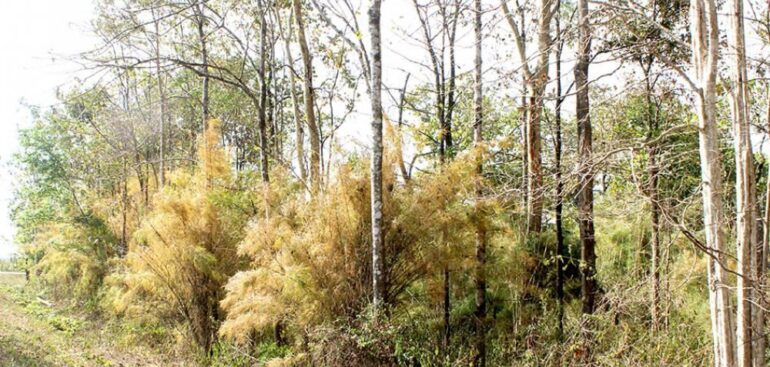
Yok Don in the season of changing leaves – source: yokdonnationalpark.vn
In 1986, the Ministry of Forestry decided to establish Yok Don Prohibited Forest; In 1990, Yok Don was recognized as a Nature Reserve; In 1992, it was upgraded from Yok Don Nature Reserve to Yok Don National Park according to Decision No. 301/TCCB of the Ministry of Forestry;
Yok Don National Park is one of the largest deciduous forests in Vietnam, located in Dak Nong and Dak Lak provinces, and secondarily in Dak Wil commune, Cu Jut district. Yok Don is located on a low plateau stretching from Cambodia to the north of Dak Lak province and the south of Gia Lai province in Vietnam. Most of the terrain is flat, with an altitude of about 200m. However, there are also two low mountain ranges in the park, the highest point being Yok Don mountain at 482m in the southeast of the park.
Geographic coordinates: From 12°45′ to 13°10′ North latitude and from 107°29′30″ to 107°48′30″ East longitude.
Yok Don National Park is located in Dak Nong and Dak Lak provinces. With an area of 115,545 hectares, the most diverse flora and fauna ecosystem in the country, this national park is classified as type A in protected areas of international importance. Yok Don National Park is the only national park in Vietnam that preserves the dipterocarp forest. A typical forest type with trees of the broad-leaved Dipterocarpaceae family has great value for the ecosystem, science, tourism, etc.
Coming to Yok Don, tourists can experience elephant riding, cycling under the canopy of the dipterocarp forest, sitting on a dugout canoe, motorboat on the river, or hiking, climbing mountains, bathing in Dak Lau, Dak Te, Dak Ken streams, visiting Bay Nhanh waterfall, Buddha waterfall… If you want to see the whole view of the dipterocarp forest, you should conquer Yok Don peak – the highest mountain chosen to name the Park. This place is covered by evergreen forest carpet among the many dipterocarp forests, creating a beautiful landscape. If you want to be adventurous, visitors can transform into a “soldier” to protect the forest to wear a ranger uniform, use some necessary equipment along the journey with the Park rangers. If you want to learn more valuable information and experience about how to raise domestic elephants, visitors can also join the elephant mahouts to lead the elephants into the forest to find food, observe the elephants under the canopy of the dipterocarp forest, take care of the elephants with the service of learning to be an elephant mahout… In addition to discovering the wonders in the heart of the dipterocarp forest, you can return to the villages in the buffer zone to learn about the unique culture, enjoy traditional dishes, and exchange the gong culture of the Central Highlands…
Source: Department of Natural Resources and Environment



